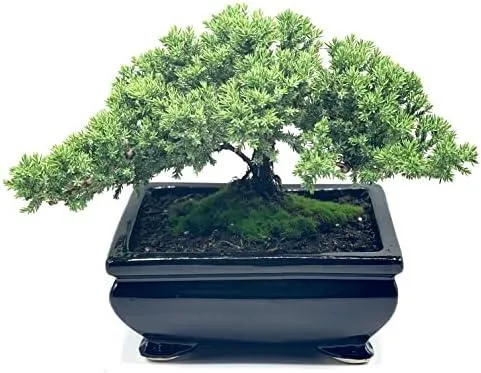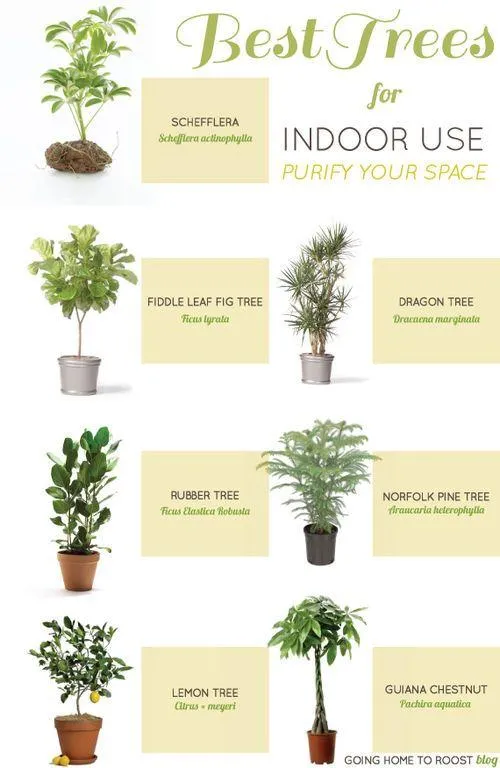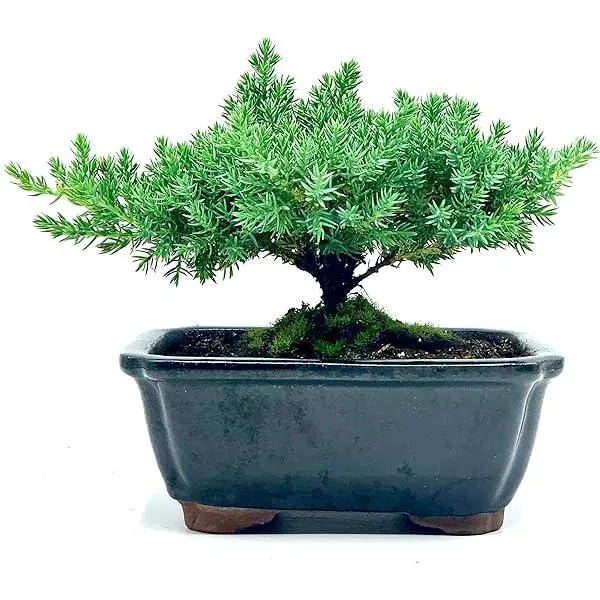The Best Indoor Tree Options for Your Home
Whether you’re looking to bring a touch of nature indoors or just want something low-maintenance to brighten up your space, indoor trees can be a great addition to any home. However, with so many varieties to choose from, it can be tough to know which ones are truly suitable for life inside. In this article, I’ll explore some of the top indoor tree options and provide answers to all the questions a homeowner may have when deciding on the right tree for their environment.
Low Light Trees
One of the main considerations is the amount of natural light available near your intended tree spot. If your home doesn’t get a ton of sunlight, you’ll want to select from trees that thrive with less light.
- Snake plant (Sansevieria trifasciata) – Also known as mother-in-law’s tongue, this is one of the hardiest and most forgiving indoor trees. It can survive with very little light and infrequent watering.
- Chinese evergreen (Aglaonema) – Available in a variety of colorful leaf patterns, Chinese evergreen does well in low-light areas several feet away from a window. Leaves may lose some of their vibrancy without adequate light.
- Pothos (Epipremnum aureum) – With its heart-shaped leaves and trailing vines, pothos is a classic low-light plant. Its ability to grow in very dull conditions makes it an excellent option for offices or areas under overhead lights only.
From my experience keeping plants, snake plants and pothos vines are true champions of low-light survival. They’ve gotten me out of some tight spots where other trees struggled without sufficient sun exposure.
Pet-Friendly Trees
If you have dogs, cats, or other pets at home, you’ll want trees that are non-toxic and pose no risks. Poisonous trees may induce vomiting or more serious health issues if nibbled on.
- English ivy (Hedera helix) – This classic trailing vine is completely safe for pets. Its ability to climb almost any surface makes it a nice visual accent.
- Bamboo palm (Chamaedorea seifrizii) – With its slender stalks and fan-like fronds, the bamboo palm presents no appeal for chewing. It does well in low or medium light.
- Peace lily (Spathiphyllum) – The white blooms and broad, glossy leaves of peace lilies pose no risk to dogs or cats. They remove indoor air pollutants like benzene and formaldehyde too!
I would avoid trees with berries, seeds, or other parts that could be tempting for a pet to accidentally eat. Play it safe with the proven non-toxic varieties instead.

Trees for Small Spaces
If you lack expansive floor space, miniature or dwarf tree varieties present a nice option. Their smaller overall size makes them suitable for limited home areas.
- Jade plant (Crassula ovata) – This succulent tree comes in a compact form well-suited to confinements like shelves, bookshelves, or windowsills.
- Corn plant (Dracaena fragrans ‘Massangeana’) – With its narrow trunks and strap-like leaves, the corn plant has an upright posture not taking up a lot of ground real estate.
- ZZ plant (Zamioculcas zamiifolia) – Known for being virtually indestructible, ZZs make a nice streamlined tree for tight quarters. Their waxy leaves require infrequent watering too.
As guy who lives in a tiny NYC apartment, I totally get the struggle of limited indoor space. These miniature selections hover closer to Bonsai size without sacrificing stylistic impact.
Low Maintenance Trees
As much as we love bringing nature inside, the ideal indoor tree also needs to be easy to care for between busy work schedules and other responsibilities. Here are some “set it and forget it” options.
- Dracaena marginata – With its straight vertical canes and dark green stripes, the dragon tree is fairly resilient to neglect. Water when soil is dry to the touch.
- Chinese money plant (Pilea peperomioides) – These adorable round-leaf plants are super chill dudes. They’ll remind you when it’s water time by wrinkling up their leaves.
- Spider plant (Chlorophytum comosum) – In addition to air-purifying qualities, spider plants are kind of lazy like me – they don’t require much TLC to look awesome hanging in a spot.
Speaking from experience, my money plant has totally bailed me out on a number of occasions after I sort of forgot about it for a minute. These low-fuss varieties got your back when life gets hectic.
Trees for Improving Air Quality
Who doesn’t want fresher indoor air quality, especially these days when we’re spending so much time inside? Certain trees naturally absorb toxins and release oxygen.

- English ivy – In addition to being pet-safe, ivy helps remove formaldehyde, benzene, and trichloroethylene from breathed air.
- Bamboo palm – Its ruggedness and attractive form is matched only by its power to neutralize toxins like benzene, formaldehyde, and carbon monoxide.
- Peace lily – As mentioned earlier, peace lilies are champion air-purifying plants that metabolize the nasty stuff in indoor atmospheres.
Trust me dawg, a few of these natural air filters flying under the radar looking fresh can really transform how you feel breathing at home. Might be kind of dope to see a NASA study proving it or something.
Additional Factors to Consider
Beyond just variety selection, a few other aspects are worth considering when choosing an indoor tree:
- Soil type – Most trees do well in an all-purpose potting mix. Succulents prefer well-draining cactus/succulent soil.
- Container size – Choose a container that’s 2-3 inches larger than the tree’s root ball and has good drainage holes.
- Temperature/humidity preferences – Some trees like warm conditions while others tolerate normal indoor variations fine.
- Pruning/growth habit – Upright, trailing, bushy – know the tree’s natural shape and trim accordingly.
- Pests/diseases – Inspect new trees carefully and quarantine if needed to prevent introducing issues to others.
Hope this helps provide a comprehensive overview of excellent indoor tree options to suit different home environments! Let me know if you have any other questions.
Indoor Tree Species and Care
| Tree Species | Light Needs | Size | Water Needs | Care Notes |
|---|---|---|---|---|
| Chinese Evergreen | Low light | Small to medium | Allow soil to dry slightly between waterings | Tolerates low light, prune to maintain shape |
| Snake Plant | Low light | Small to medium | Allow soil to dry out between waterings | V ery hardy, tolerates neglect |
| Dracena | Medium light | Medium to large | Water when top inch of soil is dry | Prune to encourage bushy growth |
| Rubber Plant | Medium light | Medium to large | Water when top inch of soil is dry | Tolerates low light, prune to shape |
| Spider Plant | Low to medium light | Small | Allow soil to dry slightly between waterings | Produces plantlets, tolerates neglect |
FAQ
- What are some good indoor trees to have?
There are a number of indoor trees that do pretty well inside homes and offices. Some of the most common ones are:
- Chinese evergreen: These trees are very forgiving—they can handle low light and don’t need much water. With their hardy leaves, they’re a good choice for beginners.
- Rubber plant: Rubber plants have thick, shiny leaves and grow well in medium to low light. They’re drought tolerant too, so they’re not difficult to look after.
- Spider plant: These are known to help purify indoor air. Spider plants have long, grass-like leaves and little plantlets that develop offshoots along the stem. You can set these babies in their own pots to make more plants!
- Parlor palm: With its full, feather-like fronds, a parlor palm can add a tropical look. It thrives with moderate light and normal watering routine.
- Dracaena species: These trees come in different shapes and colors. The most common variety has slim, upright leaves in dark green or colorful shades of yellow, red, or white. They require minimal care.
- snake plant: Also called mother-in-law’s tongue, this plant is renowned for filtering indoor air pollutants like formaldehyde and benzene. It can survive lengthy periods without water.
- Are some indoor trees better than others at purifying air?
Yes, some types are more effective than others at removing chemicals from the air inside homes and offices. Research shows that spider plants, bamboo palm, and English ivy ranks among the top air-purifying indoor plants. They seem to do an amazing job of absorbing chemicals like benzene, formaldehyde, and trichloroethylene. Snake plants and peace lilies are said to work pretty well too based on expert studies.

- How much light do indoor trees need?
The amount of light needed varies depending on the specific tree type. As a general guideline:
- Low-light trees like Chinese evergreen or rubber plant do fine in spots that get only indirect sunlight a few hours each day.
- Medium-light trees like parlor palm or dracaena need at least partial morning sun or proximity to an eastern or western window.
- High-light trees like spider plant or bamboo palm will be healthier with direct sun exposure for at least 6 hours daily.
However, too much direct sun could burn some leaves initially, so it’s best to gradually increase light over a couple weeks. With the correct lighting, indoor trees can basically thrive.
- How often should indoor trees be watered?
The watering schedule relies on the tree type and growing conditions. As a general standard:
- Low water trees like snake plant or Chinese evergreen only need water when the soil almost dries out completely, around every 1-2 weeks.
- Regular trees like parlor palm or pothos should be watered when the top soil becomes dry to the touch, approximately every 5-7 days.
- Trees preferring more moisture like Norfolk Island pine or bamboo palm require water whenever the top inch of soil dries out, around every 3-5 days.
It’s best to check the soil before watering and only water when it’s sort of dried out. Overwatering can cause root rot, so go easy on the H2O.
- How can you tell if an indoor tree is getting too much or too little water?
There are some signs that indicate overwatering or underwatering of indoor trees:

- Too much water: Leaves may yellow or drop off. Soil stays constantly moist and roots could rot.
- Too little water: Leaves wilt and droop even after watering. Over time, they yellow and drop prematurely.
- Underwatered soil is dry to the touch deep in the pot.
- Overwatered soil remains soggy and muddy.
However, occasional wilting may not mean the tree needs more watering. It could be due to dry indoor heat too. The best way is to check the soil moisture level by touching it regularly. Water only when slightly dry.
